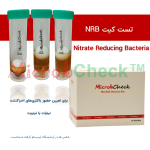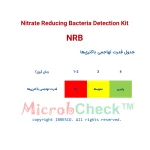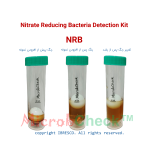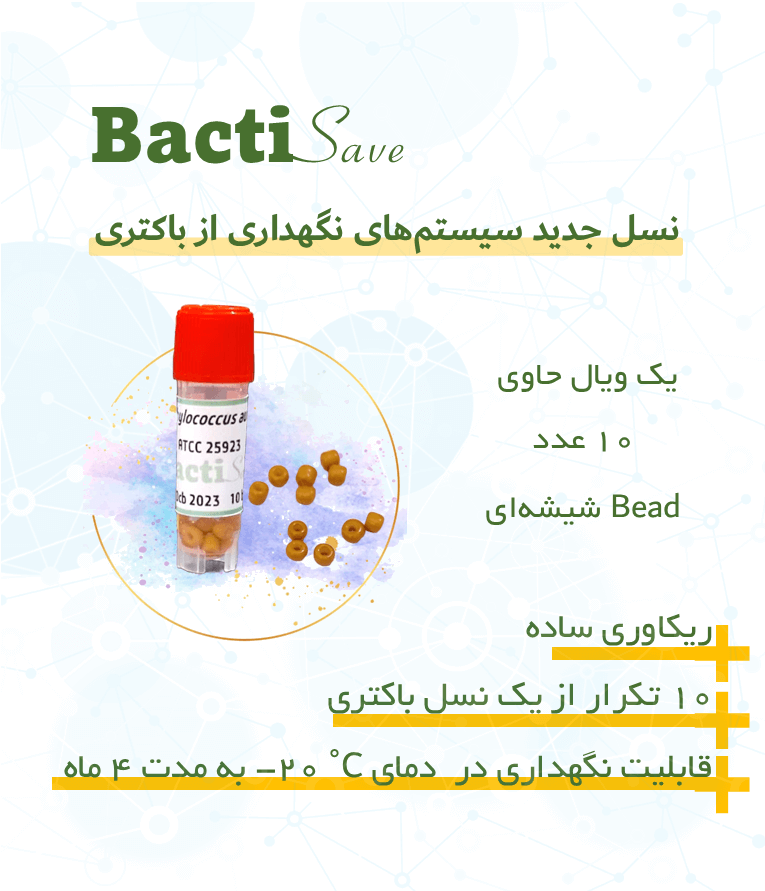توضیحات
Nitrate is commonly used as a corrosion inhibitor in cooling waters and fluids exposed to metals. Some microbes that typically use oxygen can also use nitrate as a source of oxygen. In this process, nitrate is reduced to ammonia or nitrogen gas, and the resulting liquid immediately becomes corrosive. The presence of nitrate-reducing microorganisms can lead to the removal of corrosion-inhibiting elements. Nitrate/nitrite-reducing bacteria can suppress the growth of sulfide-reducing bacteria, remove hydrogen sulfide, and consume hydrogen, leading to a decrease in corrosion.
Test
Test
Manufacturer’s recommendation:
- Avoid contact with the inner wall of the tube and its lid. Perform the test under sterile conditions.
- After opening the tube lid, invert it so that the bottom faces the ground. Then place it on a clean surface.
Test
1- Collect at least 25 milliliters of sample.
2- Pour 19 milliliters of the sample into the test tube and close the lid tightly.
3- Write the date and name of the sample on the tube lid.
4- Incubate the tube at room temperature (21-25 degrees Celsius) and away from sunlight.
5- Observe the sample every day for 5 days, if there is no bacterial growth and the environment is transparent. Whenever the medium becomes turbid, check the results according to the “interpretation of results” section. Daily examination of vials, especially during the first three days of incubation, is highly important for determining the amount of NRB contamination.
Note: If the samples under investigation are taken from environments with higher temperatures, incubate the vials at the same temperature as that of the environment.
results interpretation
results interpretation
This kit contains Solution A, Solution B, and a powder. To examine the test results, follow the steps below:
1- First, pour about three drops of solution A and three drops of solution B into a test tube, shake the tube well to mix them thoroughly.
2- Take about one milliliter of the medium inside the vial and add it to the test tube containing solution A and B. Shake the tube well to homogenize the solution.
3- Wait for about 2 minutes. Observing a color change to red indicates the reduction of nitrate to nitrite. In this case, report the result as positive.
If no color change is observed, follow the steps below:
4- Touch a very small amount of silver dust, for example by dipping a toothpick or matchstick into the sample. The result can be in two forms:
A) No color change, which means complete reduction of nitrate to gas. In this case, report the result as positive.
B) The creation of a red color, which means no reduction of nitrate. In this case, report the result as negative.
Note: Adding large amounts of silver dust will give a false negative result for the test.
Estimating population and aggressive potential of bacteria
The speed of changes in the environment inside the tube semi-quantitatively indicates the number of NRBs present in the sample. A positive result after one to two days indicates high NRB pollution (high power), after two to three days indicates medium pollution (medium power), and more than three days indicates low pollution (low power).












